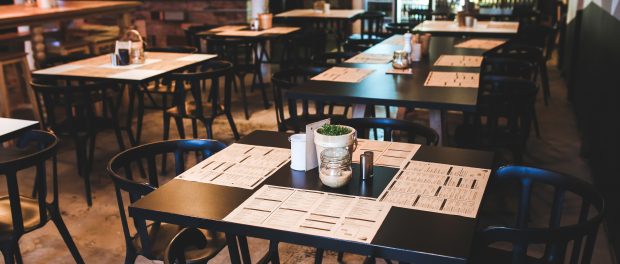Simple steps can mitigate the impact of burst pipes

Mark Taylor, Advanced Services Operations Manager, from Water Plus, the UK’s largest water retailer, reveals the hidden costs of an interrupted water supply, and outlines the steps restaurateurs can take to minimise the issue and any resulting disruption.
While keeping the water supply in working order may not seem a top priority when running a busy restaurant, issues with water pipes at your site can be deceptively costly.
For example, a burst pipe can lose as much as one cubic metre of water – equivalent to 1,000 litres, or 1,333 750ml (75cl) bottles of wine or 1,760 pints of beer, – an hour, which can cost upwards of £26,000 a year, if left unchecked.
Attention is also increasing around water use and water efficiency. Defra’s Food Industry Sustainability Strategy (FISS) challenged the food and drink industry to reduce its water use by 2020 – including reducing water use by up to 25% in the South East compared to 2007 levels. The latest Resources and waste strategy for England, published by Defra in December last year, also highlighted efficient use of natural resources and reducing water use and waste.
Given that responsibility for maintaining the pipe network within the premises, from the point of the water meter, falls to the restaurant owner, just like homeowners, it’s important to have a plan in place to fix any supply issues before they can escalate into a more serious problem.
There are some straightforward steps that restaurant owners can take to identify any problems, mitigate the effect of water supply issues and help prevent your water costs increasing.
Spotting the signs of a leak
Given the financial cost of even a minor leak, it’s important to know how they can be identified.
Weekly inspections of the premises should be carried out in order to spot any obvious leaks, such as a continuously running overflow pipe outside, faulty taps or urinals, visible signs of a leak around pipes or on exterior walls, or overflowing toilet cisterns. Each of these drips all add to your water bill too.
Checking how much water you’re using
The water meter is also an effective indicator of day-to-day usage, with a spike in consumption often signalling a hidden leak that may be going undetected. To determine whether you have a leak at your site then take the below steps:
- Choose a time when your business is not using water – overnight can be best if your site is closed – and turn off taps and water-using appliances.
- Then take a meter reading, if it’s safe for you to access.
- Don’t use any water for at least an hour, then take another meter reading.
- See if the numbers on the meter have changed. If usage has still risen, this could indicate a leak.
Minimising the impact of a disrupted supply
The best way to minimise the effect of an interrupted water supply is to have a plan in place for the site so your costs and any disruption is reduced as much as possible.
The most important part of any plan is to have arrangements to source replacement water – such as bulk water delivery, additional tanks, or even bottled water – so that the restaurant can continue to run.
There are also several considerations restaurant owners should factor into any contingency plan.
Delivery vehicles should be able to access the site quickly and easily, with any vehicle access plan taking into account the wide turning circle of any water delivery vehicle, such as an articulated water tanker.
It’s also worth having additional water storage facilities in place (such as static tanks). At the very least, space should be set aside in the storeroom to keep emergency water tanks or bottled water in case they’re needed. If possible, it may even be worth installing injection points so that water can be directly added to the restaurant’s system, ensuring minimal downtime should supply be interrupted.
Finally, it’s important to ensure that all employees are fully trained on any contingency plans put in place, so that there is always somebody on-site who knows what to do – and who to contact – in the event of a disrupted supply. On this note, employees should also be trained on location and correct use of the on-site stop tap, so that supply can be quickly shut off and wastage kept to a minimum if a leak is discovered.
What to do if a water supply interruption occurs
The first step for restaurants to take is to contact their wholesaler, who is responsible for supplying clean water. The wholesaler will be able to advise on any problems they’re aware of in the wider network near your site, such as burst pipes, leaks or scheduled repairs, as well as any actions they’re taking to fix them. They can also advise whether they’re able to deliver additional water to your site while your supply is off.
If the wholesaler says there are no network supply issues then you’ll need to arrange a repair to get the water flowing again at your site.
Overall, preparing ahead of time and having a contingency plan to hand can greatly minimise the frequency – and associated cost – of leaks and other supply interruptions, ensuring that trade can continue to flow all year-round.
For more advice on what to do in the event of a burst pipe, leak or supply interruption, please visit www.water-plus.co.uk/restaurants


Leave a comment